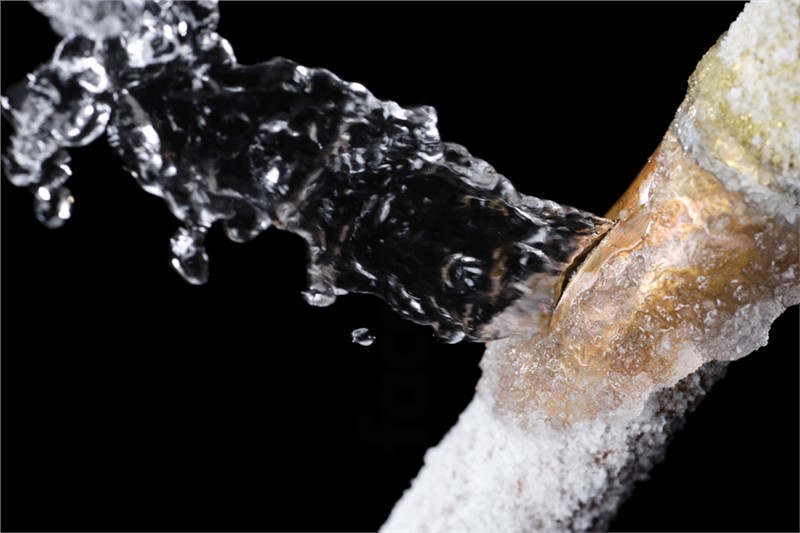What are your ideas regarding What Do I Do If My AC Pipe Is Frozen?

Intro
Discovering that your AC pipeline is frozen can be worrying, particularly during warm summer season when you rely upon your ac system one of the most. Understanding what to do in such a situation is essential to prevent further damage to your air conditioning system and guarantee your comfort indoors.
Recognizing the Causes
A number of elements can add to the freezing of an AC pipeline. Comprehending these reasons can help you resolve the problem successfully.
Absence of Airflow
One common root cause of a frozen AC pipeline is inadequate air flow. When the air movement over the evaporator coil is limited, it can trigger the coil to go down below freezing temperature, bring about ice formation on the pipe.
Low Refrigerant Levels
Inadequate refrigerant degrees in your air conditioning system can additionally lead to a frozen pipeline. Low refrigerant levels can create the pressure in the system to drop, bring about the cold of moisture on the evaporator coil.
Winter Conditions
In chillier climates, freezing temperatures outside can add to the cold of a/c pipelines. If your AC unit is not correctly shielded or if there are leaks in the ductwork, chilly air can penetrate the system, triggering the pipe to freeze.
Dirty Air Filters
Dirty or blocked air filters can limit air movement in your AC system, bring about different concerns, including a frozen pipe. It's vital to change or cleanse your air filters on a regular basis to make certain correct air flow and avoid ice build-up.
Indicators of a Frozen Air Conditioning Pipe
Recognizing the indications of a frozen a/c pipeline is important for prompt activity.
Decreased Airflow
If you notice a substantial reduction in airflow from your vents, it might show a frozen pipeline.
Ice Buildup on the Pipe
Visible ice buildup on the cooling agent line or the evaporator coil is a clear indication of an icy air conditioning pipeline.
Odd Sounds from the Unit
Uncommon audios, such as hissing or gurgling, originating from your AC system can signify that there's ice existing on the pipe.
Immediate Actions to Take
When faced with a frozen AC pipeline, it's necessary to act promptly to stop additional damages to your cooling system.
Switching off the air conditioner
The primary step is to turn off your ac system to avoid the system from running and exacerbating the issue.
Looking for Blockages
Check the area around the indoor device for any type of obstructions that might be blocking air flow, such as furniture or drapes.
Defrosting the Pipe
You can make use of mild techniques like placing towels taken in warm water around the frozen pipe to aid thaw it slowly.
Preventive Measures
Taking safety nets can assist avoid future events of an icy air conditioning pipeline.
When DIY Methods Fail
If your efforts to thaw the pipe or address various other concerns are not successful, it's time to hire a professional.
Value of Hiring a Professional HVAC Technician
A licensed HVAC service technician has the know-how and tools required to diagnose and repair concerns with your a/c system safely and properly.
Routine Maintenance Checks
Schedule regular upkeep consult a professional HVAC service technician to guarantee that your air conditioning system is running efficiently.
Changing Air Filters
Frequently replace or clean your air filters to stop air flow limitations and maintain optimal performance.
Insulating Exposed Pipes
If your AC pipes are revealed to cold temperatures, consider insulating them to prevent cold during cold weather.
Seeking Professional Help
If DIY techniques stop working to solve the concern or if you're uncertain about exactly how to proceed, it's ideal to look for assistance from a qualified HVAC service technician.
Verdict
Handling an icy a/c pipeline can be a frustrating experience, but recognizing just how to react can help decrease damages and recover comfort to your home. By comprehending the causes, identifying the indications, and taking prompt action, you can efficiently deal with the problem and avoid future incidents.
What to Do If Your AC Line Is Frozen
Make Sure All Supply and Return Air Vents Are Open
If you notice problems with airflow, the first thing you should do is check your supply and return vents. Supply vents distribute clean, conditioned air throughout your home. As this air becomes stale, it’s pulled into the return vent, where it’s reconditioned before being sent back out through the supply vent.
When these vents are closed, air won’t flow in the home. Before examining your AC, check the vents in every room and ensure they’re all open.
Check for a Dirty Air Filter
Another possible cause of limited airflow is a dirty air filter. Your air conditioner’s filters catch elements you don’t want to breathe in, such as dirt and dust. Over time, filters can become clogged, ultimately blocking air from flowing in and out. The lack of airflow can then cause the entire coil to freeze and will completely restrict any air from moving through it. The AC may need to be powered off for one to two days to allow the coil to thaw after replacing the filter to allow proper functioning of the unit. This debris can also accumulate on your AC’s evaporator coil, requiring a more serious repair. In general, air filters should be cleaned regularly (about every two weeks).
Assess Your Outdoor Unit
In addition to checking your AC, assessing the outdoor unit is a good idea. Also known as the condensing unit, it works with your interior unit to release heat outside. An issue with the outdoor unit can result in rising internal temperatures.
Overgrown Shrubs or Clogged Leaves
From leaves and twigs to shrubs and debris, there’s no shortage of outdoor elements that can accumulate around your condensing unit. When these elements get lodged inside the unit, they can block airflow. Fortunately, removing the blockage can solve the problem.
Sounds of a Broken Fan
Shrubs and leaves aren’t the only things that can impede your outdoor unit’s airflow. If the fan is broken, the unit won’t be able to properly get rid of heat — which means the internal temperature won’t go down. First, make sure the fan is spinning. If it is, check for the following sounds of a broken fan:
Buzzing Rattling Screeching Hissing Clicking Preventative Measures
Nobody wants to deal with a frozen AC line. In addition to causing problems with your air conditioner, they require professional repairs. On the bright side, there are preventative measures you can take to help ensure this issue doesn’t arise in the first place.
https://www.coopergreenteam.com/blog/what-to-do-if-ac-line-frozen

Hopefully you enjoyed reading our excerpt on What Do I Do If My AC Pipe Is Frozen. Thanks for spending some time to read through our post. Sharing is nice. One never knows, you will be doing someone a favor. Thanks a lot for your time. Don't forget to pay a visit to our blog back soon.
Click Here